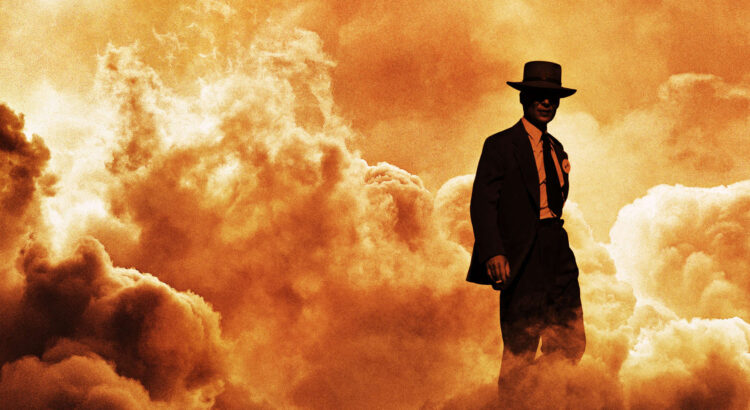Christopher Nolan’s Oppenheimer has received nothing but praise since its opening eight months ago. It boasted 13 wins at the Academy Awards and alongside Greta Gerwig’s Barbie, revitalized the cinema business with the “Barbenheimer” following last summer. The film is still making its round of appearances in theaters across America in its digital and 35mm film form. The Michigan Theater is hosting a unique opportunity to view the film in its intended 35mm film—I jumped at the opportunity to do so, as yes, I was also one of the “Barbenheimer” people back in July, and had to see it again.
35mm film is a type of film that has been used in photography and film for decades. It consists of a strip of celluloid with light-sensitive emulsion coated on one side, getting its name from actually being 35mm wide. This format became popular due to its versatility, offering high image quality and ease of handling in both still photography and motion pictures.
If you’ve somehow survived the relentless “Barbenheimer” memes of the summer and don’t know what Oppenheimer is about, I will save you some of the Wiki read now: The movie focuses on the life of (you’ll never guess) J. Robert Oppenheimer, the physicist who led the Manhattan Project during World War II. It explores Oppenheimer’s complex personality, his role in developing the atomic bomb, and the moral dilemmas he faced with the consequences to humanity (accompanied by snippets from his journey to genius as well). Oppenheimer forces you to face the personal and historical consequences of scientific innovation and its impact on humanity itself.
The experience of watching Oppenheimer in 35mm was a little different than the digital medium usually used for movies. The movie became more beautiful from the subtleties the 35mm brought out. I noticed background action and unique set pieces were brought out from the clarity of the film. I also enjoyed the on-screen film crackle along with the deep saturated blues and bright yellows.
I adore biopics. They let you into a (highly dramatized) sliver of one significant person’s reality, often emphasizing their impact on humanity. In a way, it feels like you made a new friend, as you are allowed to watch a creative recap (…with one director’s perspective) of someone’s existence. Lives are so many things, and Oppenheimer presented the many corners of J. R. Oppenheimer’s life. The movie gives insight into some of his more personal struggles, surrounding his marriage with Kitty Puening and their two children and an affair with Communist USA Party member, Jean Tatlock. Although, Cillian Murphy (J. R. Oppenheimer) is careful about letting you in too close. He plays a closed and often mysterious man, who is difficult to read clearly. This made for an even deeper second part of the movie while Oppenheimer’s show trial with the US Atomic Energy Chairman, Lewis Strauss, was at it’s peak.
I enjoyed returning to the exquisite detail and existentialism this film so graciously offers. Christopher Nolan remains a master of weaving brilliantly complex stories into one fully fleshed-out portrait, and I find there is always something new and haunting to find inside his films.
Oppenheimer in 35mm film is at the Michigan Theater until April 2nd.
Rated R, 180 minutes.
Photo thanks to Physics World.















